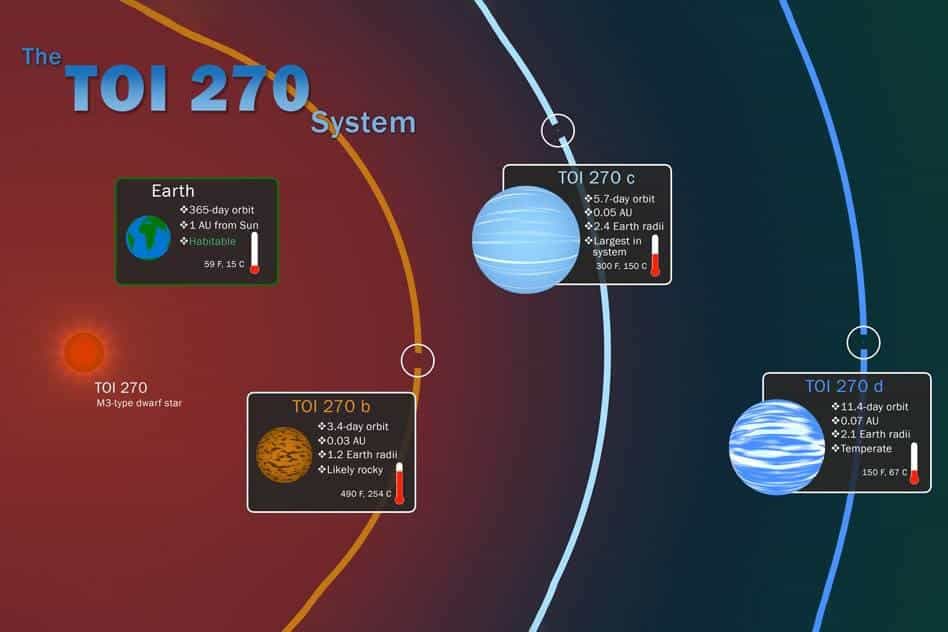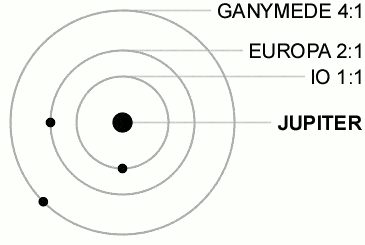The findings include two mini-Neptunes and a rocky super-Earth.

It seems hard to believe that we only discovered our first exoplanet — a planet outside of our solar system — in the 1990s. We now know thousands of exoplanets, and astronomers are verifying even more potential candidates. Much of what we know about exoplanets comes from the Kepler telescope, which was retired recently after 9 years of service.
But Kepler’s successor, TESS, is already bringing in results.
Researchers working with NASA’s Transiting Exoplanet Survey Satellite (TESS) have discovered three new worlds in our cosmic neighborhood, a mere 73 light-years away. The planets are all in a solar system that seems very different from our own.
For starters, the planets in our solar system are extremes — we have everything from the very large Jupiter and Neptune down to Earth and Mars, and to smaller rocky planets like Mercury. This new planetary system, which has been dubbed TOI-270, seems to have planets much closer in size to each other. All three planets are intermediate planets — something which is lacking from our solar system.
The two mini-Neptunes are exciting for astronomers because they represent a “missing link” in planetary formation. Mini-Neptunes are, as the name implies, Neptune-like planets with deep layers of ice and liquid (not necessarily from water, though). However, unlike Neptune, whose mass is 17 times larger than that of the Earth, mini-Neptunes are at most 10 times more massive.
“There are a lot of little pieces of the puzzle that we can solve with this system,” says Maximilian Günther, a postdoc in MIT’s Kavli Institute for Astrophysics and Space Research and lead author of a study published in Nature Astronomy that details the discovery. “You can really do all the things you want to do in exoplanet science, with this system.”
There’s another interesting peculiarity of the system: the planets line up in what astronomers call a resonant chain.

In other words, the planets’ orbits are aligned in a way that is very close to whole integers. In this case, it’s 2:1 for the outer pair, and 3:5 for the inner pair. In our solar system, the moons of Jupiter are lined up in such a way (and researchers have found evidence of other exoplanets arranged in a similar way).
“For TOI-270, these planets line up like pearls on a string,” Günther says. “That’s a very interesting thing, because it lets us study their dynamical behavior. And you can almost expect, if there are more planets, the next one would be somewhere further out, at another integer ratio.”
As for habitability, TOI-270 also raises some interesting questions. The rocky super-Earth and one of the mini-Neptunes are too close to their star. However, the other mini-Neptune, called TOI-270-d appears to lie in the habitable zone, where temperatures might be sufficient to host liquid water and possibly life. However, although the planet lies in the right area, this is still quite unlikely, the new study reveals.
TOI-270-d most likely has a thick atmosphere which produces an intense greenhouse effect, causing the planet’s surface to be too hot for habitation. But the system could still hold other planets — if these planets have a similar structure but lie farther away from the star, the temperature might be just right.
Thankfully, the host star, TOI-270, is remarkably well-suited for habitability searches, “as it is particularly quiet”, researchers write. The team now wants to focus other instruments, especially the upcoming James Webb Space Telescope on the star and its solar system to see if there are indeed other planets and to assess their physical parameters. It’s safe to say that we will probably be hearing about the system in the not-too-distant future.
“TOI-270 is a true Disneyland for exoplanet science, and one of the prime systems TESS was set out to discover,” Günther says. “It is an exceptional laboratory for not one, but many reasons — it really ticks all the boxes.”
The study “A super-Earth and two sub-Neptunes transiting the bright, nearby and quiet M-dwarf TOI-270” has been published in Nature Astronomy.






